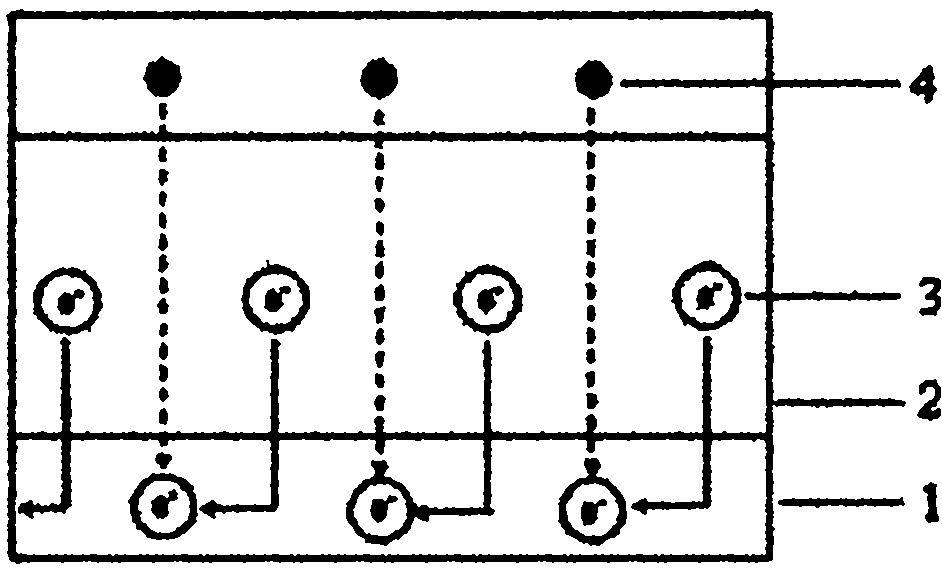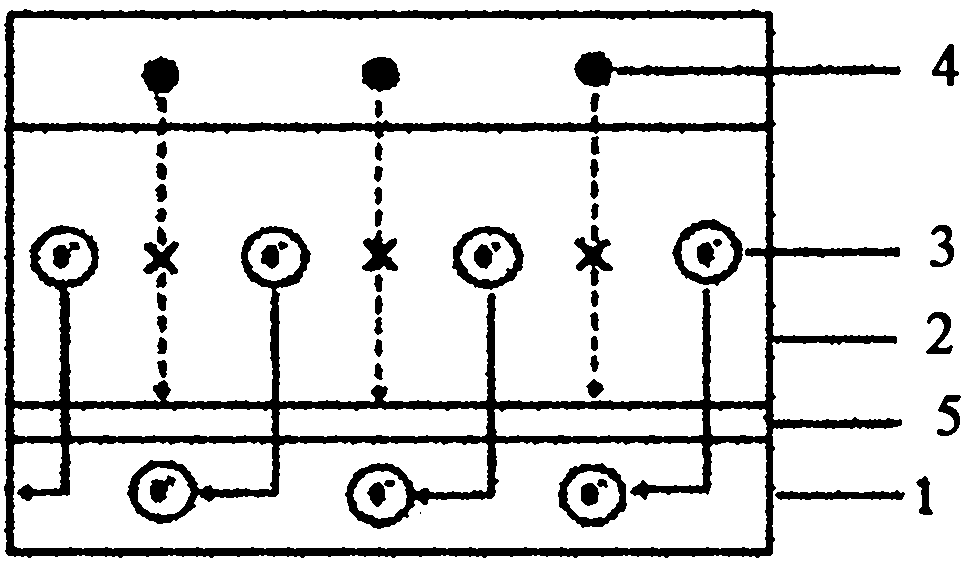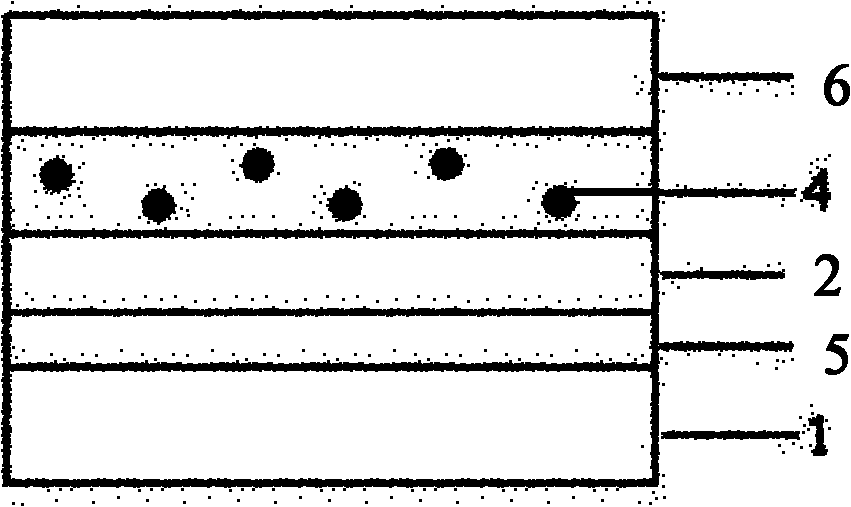Solar battery with graphite interface layer and manufacturing method thereof
A technology of solar cells and graphene, applied in the field of sensitized solar cells and its preparation, can solve the problems of sensitized solar cells to reduce photoelectric performance
- Summary
- Abstract
- Description
- Claims
- Application Information
AI Technical Summary
Problems solved by technology
Method used
Image
Examples
Embodiment 1
[0038] (1) Ultrasonic disperse 5mg of graphite oxide in 100ml of ethanol to form a suspension of 0.05mg / ml
[0039] (2) Spray the suspension of graphite oxide onto the indium tin oxide conductive glass under air carrier gas, the carrier gas flow rate is 100 sccm; the spraying time is 1min; the temperature of the conductive glass is 60°C
[0040](3) The graphite oxide sprayed on the conductive glass is heat-treated at 250° C. for 30 minutes in a hydrogen atmosphere to reduce it to graphene, that is, the graphene interface layer. Tested by atomic force microscope (MFP-3D-SA type of Asylum Research Company of the United States), the thickness of the graphene interface layer is 1.2nm
[0041] (4) Put 1 g of titanium dioxide nanocrystalline powder, 0.5 g of polyethylene glycol, and 30 ml of deionized water into a mortar, and grind for 30 minutes to obtain a titanium dioxide nanocrystalline slurry. Coating the slurry on conductive glass with a graphene interface layer, drying at ro...
Embodiment 2
[0046] (1) Ultrasonic disperse 50mg of graphite oxide in 100ml of ethanol to form a 0.5mg / ml suspension
[0047] (2) Spray the suspension of graphite oxide onto the indium tin oxide conductive glass under air carrier gas, the carrier gas flow rate is 500 sccm; the spraying time is 2min; the substrate temperature is 70°C
[0048] (3) Graphite oxide sprayed on the conductive glass is heat-treated at 300° C. for 60 minutes in a carbon monoxide atmosphere to reduce it to graphene, that is, the graphene interface layer. Tested by atomic force microscope (MFP-3D-SA type of Asylum Research Company of the United States), the thickness of the graphene interface layer is 2.5nm
[0049] (4) Put 1 g of titanium dioxide nanocrystalline powder, 0.5 g of polyethylene glycol, and 30 ml of deionized water into a mortar, and grind for 30 minutes to obtain a titanium dioxide nanocrystalline slurry. Coating the slurry on conductive glass with a graphene interface layer, drying at room temperatur...
Embodiment 3
[0054] (1) Ultrasonic disperse 5mg of graphite oxide in 100ml of acetone to form a 0.05mg / ml suspension
[0055] (2) Spray the suspension of graphite oxide onto the indium tin oxide conductive glass under air carrier gas, the carrier gas flow rate is 1000 sccm; the spraying time is 3min; the substrate temperature is 90°C
[0056] (3) The graphite oxide sprayed on the conductive glass is heat-treated at 250° C. for 30 minutes in a helium atmosphere, and then reduced to a graphene film, that is, the graphene interface layer. Tested by atomic force microscope (MFP-3D-SA type of Asylum Research Company of the United States), the thickness of the graphene interface layer is 1.5nm
[0057] (4) Put 1 g of titanium dioxide nanocrystalline powder, 0.5 g of polyethylene glycol, and 30 ml of deionized water into a mortar, and grind for 30 minutes to obtain a titanium dioxide nanocrystalline slurry. Coating the slurry on conductive glass with a graphene interface layer, drying at room te...
PUM
| Property | Measurement | Unit |
|---|---|---|
| Thickness | aaaaa | aaaaa |
| Thickness | aaaaa | aaaaa |
| Thickness | aaaaa | aaaaa |
Abstract
Description
Claims
Application Information
 Login to View More
Login to View More - R&D
- Intellectual Property
- Life Sciences
- Materials
- Tech Scout
- Unparalleled Data Quality
- Higher Quality Content
- 60% Fewer Hallucinations
Browse by: Latest US Patents, China's latest patents, Technical Efficacy Thesaurus, Application Domain, Technology Topic, Popular Technical Reports.
© 2025 PatSnap. All rights reserved.Legal|Privacy policy|Modern Slavery Act Transparency Statement|Sitemap|About US| Contact US: help@patsnap.com



